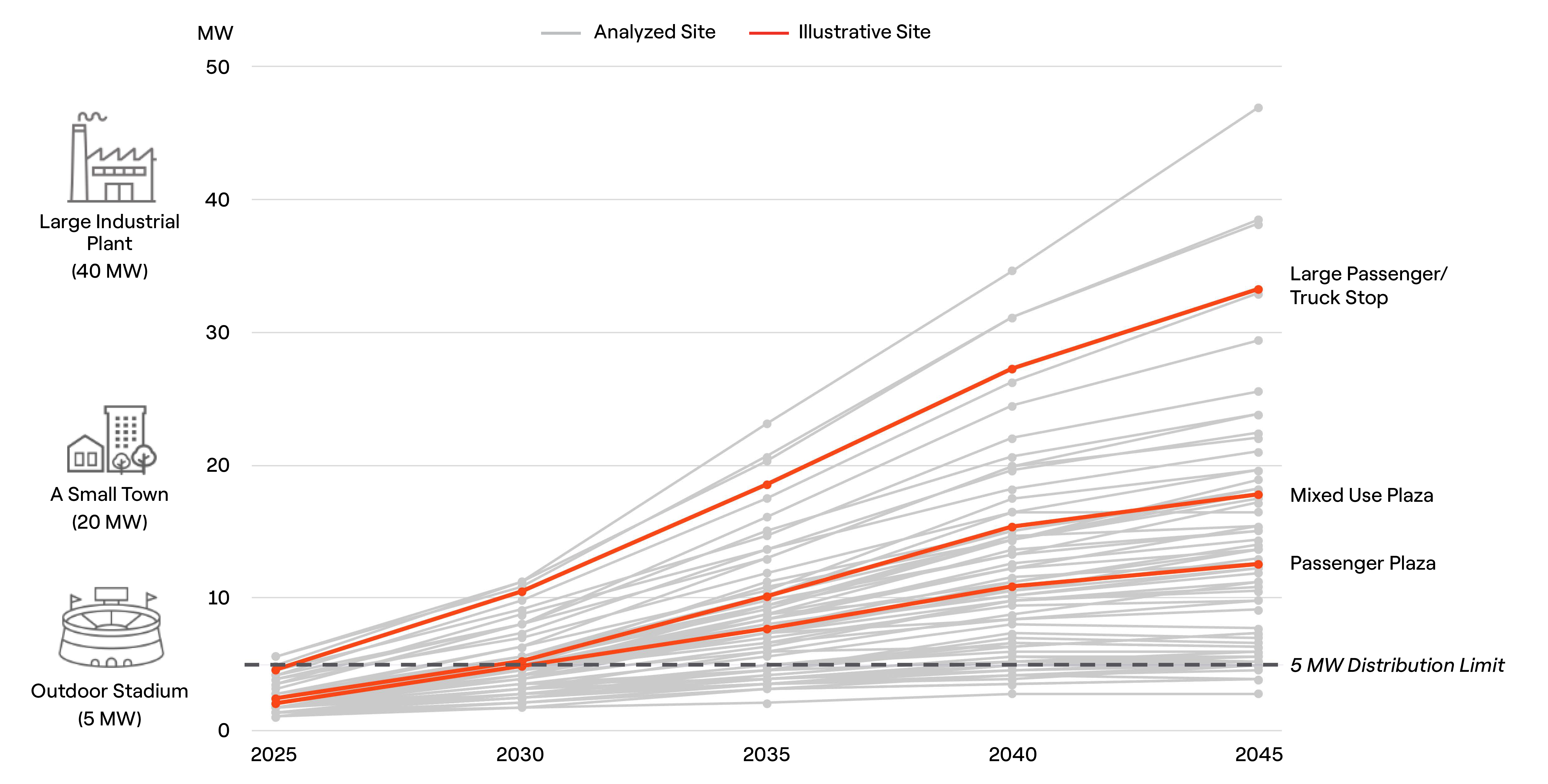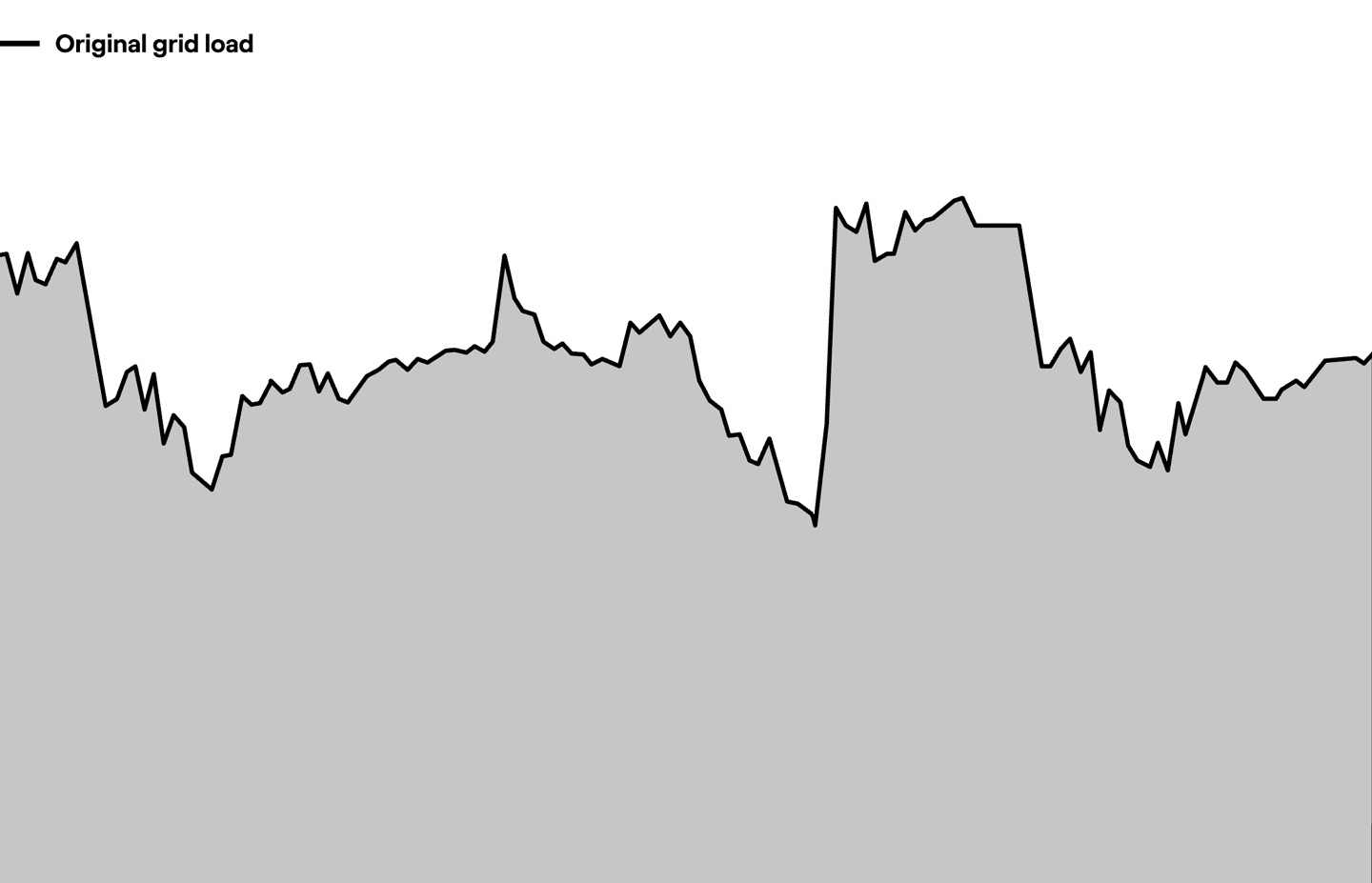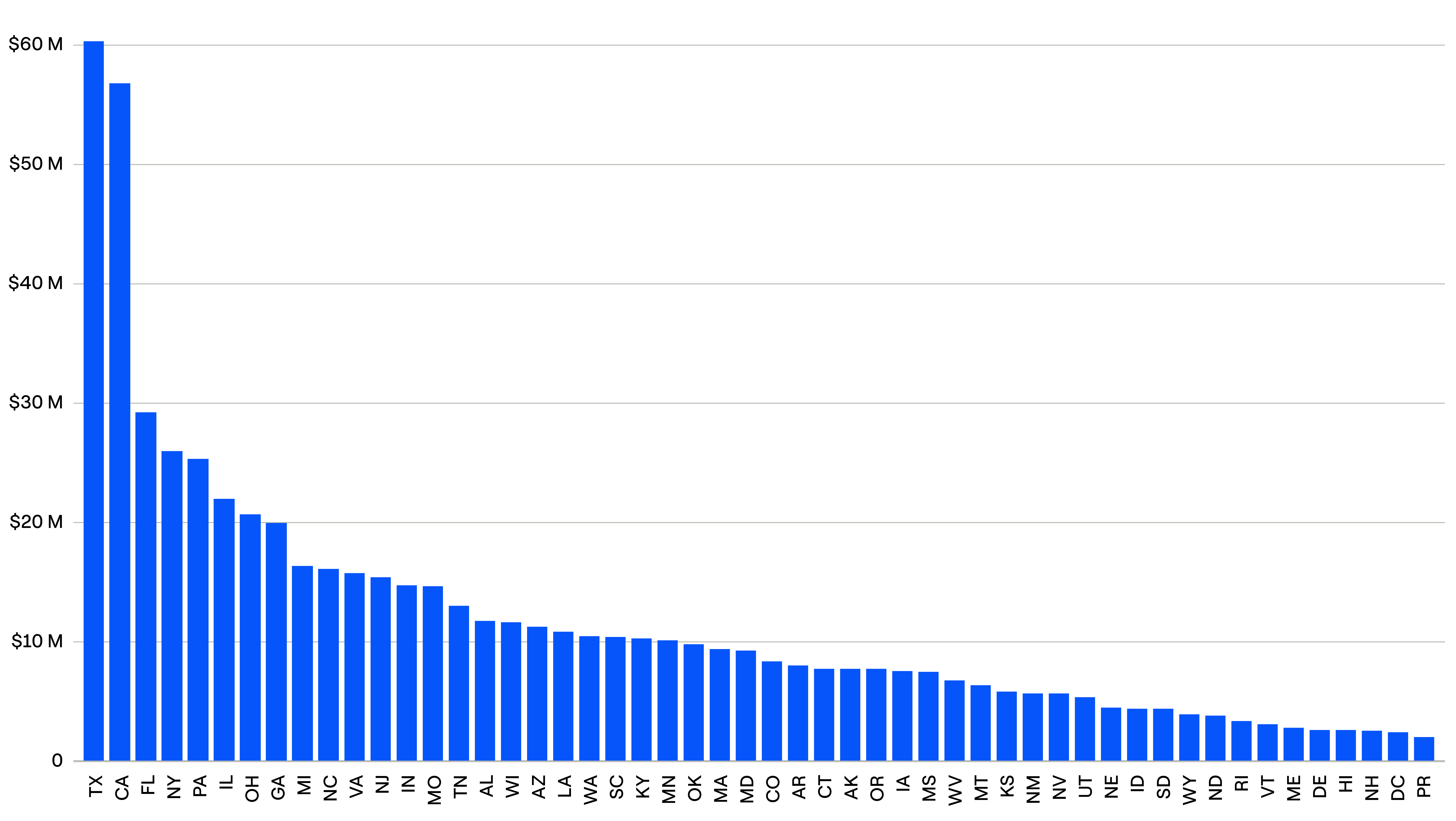Pairing EV charging with distributed energy solutions
It is important to note that the increased demand for electricity from EV charging stations can put stress on the electric grid, particularly during peak hours. The electric grid has a wide range of equipment, all of which must be rated to supply the peak demand of every downstream load. Increased load from EV charging can lead to higher energy costs and, in some cases, stress the local grid enough to cause system-wide blackouts.
A recent study by National Grid, CALSTART, RMI, and Stable Auto showed that public charging sites will have a 5-10 MW impact on electricity grids by 2030 and up to 40 MW by 2045. A typical distribution interconnection limit is 5 MW, and upgrades over that threshold can cost anywhere between $2 to $45 million. Therefore, it is crucial to consider strategies that mitigate the impact of fast charging on the grid.
Capacity required to meet annual peak demand at each site compared to other large energy users

Source: Electric Highways Study by National Grid, CALSTART, RMI, and Stable Auto
One solution is to incorporate distributed energy resources (DERs) such as solar panels and battery energy storage. These resources can help manage the demand for electricity from charging stations and reduce the load on the grid during peak hours. How? Solar panels generate clean electricity to power EV charging stations during daylight hours, reducing the amount of electricity drawn from the grid. Battery energy storage can then store excess solar energy and discharge it during peak hours when demand on the grid is high. This combination of integrated energy assets can reduce the impact of fast charging on the grid and prevent blackouts. In fact, some states are realizing the resilience benefits of this combination, specifically putting a premium on it to encourage its adoption.
The animation below shows how solar and storage come together to reduce peak demand that would otherwise occur with EV charging, and instead maximize self-consumption from solar.
How solar and storage reduce peak demand

There are many benefits to this strategy of pairing solar and storage with EV charging. Layering on DERs to DC fast charging infrastructure can enable an EV charging site host to:
- Earn revenue by providing energy flexibility to the grid (e.g., through demand response programs)
- Accelerate sustainability goals, while bringing more customers to the site
- Offset up to 80% of total project costs, under the NEVI program
Energy resilience considerations
To receive NEVI funds, applicants must meet a strict performance requirement – specifically, each EV charging port must have an average annual uptime greater than 97%. For consumers, this is great protection to ensure that they can access and use the infrastructure when they show up at a public EV charging station.
In addition to ensuring charging port uptime, there are also grid instabilities to consider. That’s where integrating distributed energy resources comes into play. For better reliability, site hosts can pair their EV charging stations with other energy solutions to build energy resilience. Specifically, by incorporating on-site solar and battery backups or microgrid controls, the site host can create a more resilient and sustainable energy system supporting widespread EV adoption.
It’s all in the details: state by state implementations
To receive NEVI funding, eligible entities must apply to each state’s (including Washington, D.C. and Puerto Rico) Department of Transportation or relevant NEVI coordinating agency separately. Applicants must provide detailed information about their proposed EV charging projects, including the location, scope, and expected outcomes. Each Department of Transportation or responsible agency evaluates applications based on various factors, including the impact on EV adoption, the potential for reducing emissions, and project feasibility.
For all states and territories, EV charging projects that serve disadvantaged communities with low or no access to EV charging infrastructure are prioritized. However, each state defines and identifies these priority communities slightly differently, so there’s a lot of work to do to learn each state and territory’s selection criteria to maximize the chances of securing NEVI funds.
Why partner with Enel and Enel X Way?
At Enel, we’re not just providing site hosts with free public chargers, nor just selling electric vehicle charging or battery storage hardware. We offer an end-to-end solution – from understanding your organization’s energy transition plans to assessing your potential grid impacts – to create the best energy solution for your transition. Installing EV charging infrastructure is fundamentally an energy problem – your organization needs to think about how much load the charging infrastructure will add to the grid, how charging demand will impact the host organization’s utility bills, and how these costs and interconnection delays may be addressed by adding energy flexibility on site.
Through our subsidiary dedicated to electric mobility, Enel X Way, we are accelerating the deployment of EV charging in North America. Enel X Way is leveraging its global expertise and experience in public EV charging and energy infrastructure to enter the public charging space in North America. It announced in April 2023 plans to add at least two million EV charge ports in North America across home, commercial, and public charging segments by 2030. This plan includes over 10,000 DC public charging stations in support of the NEVI program in select areas of the country. For select locations, part of this infrastructure investment will result in Enel X Way owning and operating charging stations and deploying them at no cost for these site hosts.
While energy management is not a core expertise of most EV charging sellers, it’s where we truly excel. Our team of experts can work with you to create a comprehensive solution that addresses all of your energy needs, from installation to ongoing operations – and capture value from incentive programs like the Bipartisan Infrastructure Law and the Inflation Reduction Act. With Enel and Enel X Way, you’ll have a trusted partner that can help you navigate the complex world of energy and EV charging, leveraging a suite of on-site and off-site solutions across the energy transition roadmap to ensure that your transition is a success. Contact us today to evaluate your facilities and your potential to take advantage of NEVI opportunities – and ensure that you are maximizing your EV charging infrastructure by layering on distributed energy resources like solar and battery storage.


